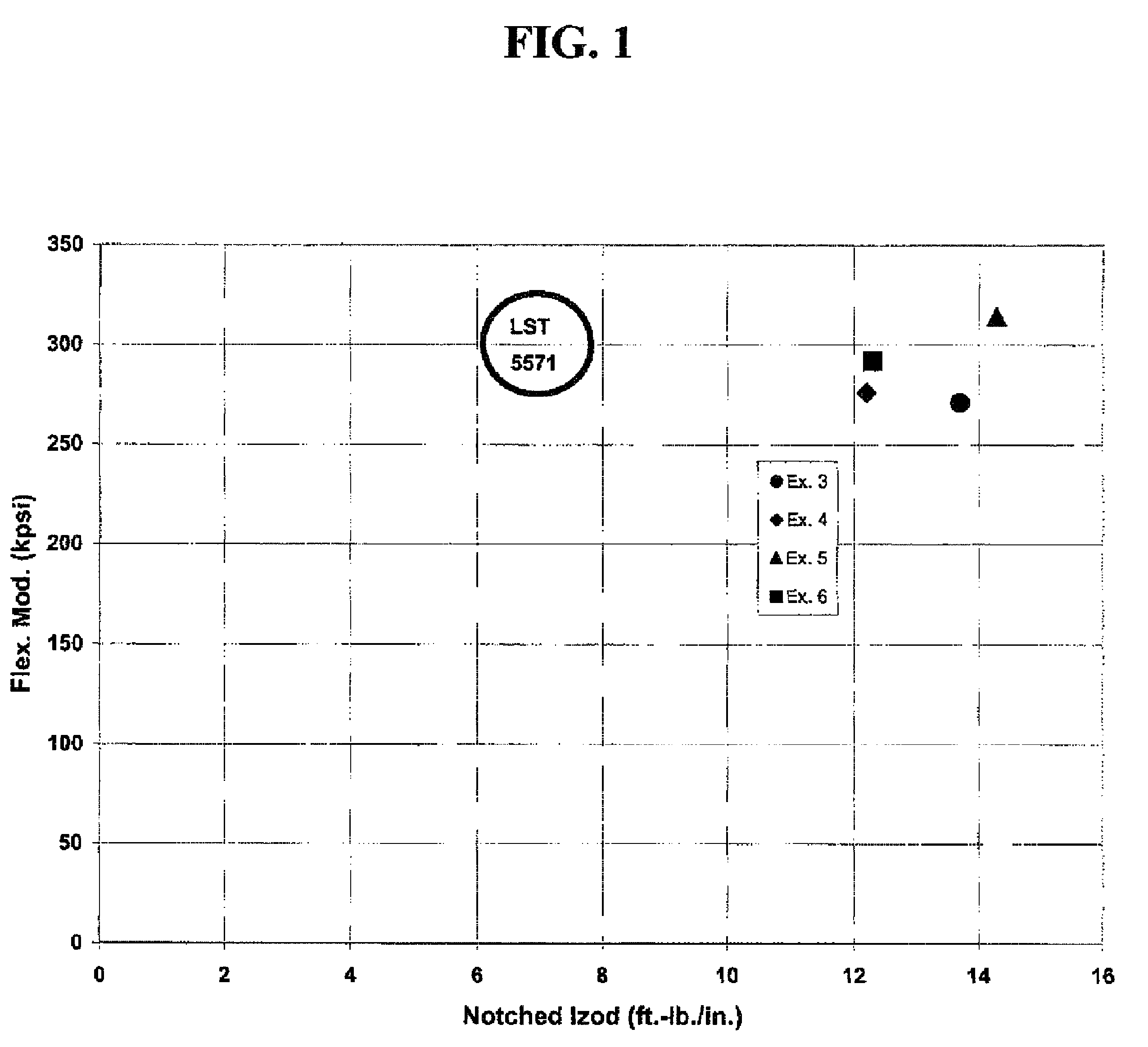Nucleated polypropylene nanocomposites
a polypropylene nano and polypropylene technology, applied in the field of composites, can solve the problems of expensive additives of organic cement, and achieve the effects of high flexural strength, improved toughness of nuc-pp, and unsatisfactory toughness
- Summary
- Abstract
- Description
- Claims
- Application Information
AI Technical Summary
Benefits of technology
Problems solved by technology
Method used
Image
Examples
examples
[0064]Table 4 shows concentrate formulations A-D.
[0065]
TABLE 4Concentrate Formulations (Wt. Percent)ABCDProfax 6323 PP (Basell)19Innovene H35Z-02 nuc-PP (Innovene)*301918I44P clay (Nanocor)40404040PB5104 maleated PP (Chemtura)30404040Maxsperse dispersion agent (Chemax)1B-225 stabilizer (Ciba Chemicals)111*Recently changed brand names: Previously called Accpro 9934 resin
[0066]Table 5 shows the dilution or “let-down” of Concentrate A to into various combinations of nuc-PP, and two different types of polyolefin elastomer.
[0067]
TABLE 5Compound Formulations (Wt. Percent)CompCompCompCompCompCompABCDEF12Conc. A0100101003030Innovene10072.582.59072.582.55050H35Z-02nuc-PP(Innovene)EG-8150017.517.500000Elastomer(DuPontElastomers)EG-8180000017.517.52020Elastomer(DuPontElastomers)
[0068]All concentrates A-D were made on a 27 mm Leistritz co-rotating twin screw extruder made by American Leistritz Extruder Corp. of Somerville, N.J., USA. All ingredients were added at the throat. The feeder rate was...
PUM
| Property | Measurement | Unit |
|---|---|---|
| toughness | aaaaa | aaaaa |
| flexural modulus | aaaaa | aaaaa |
| tensile strength | aaaaa | aaaaa |
Abstract
Description
Claims
Application Information
 Login to View More
Login to View More - R&D
- Intellectual Property
- Life Sciences
- Materials
- Tech Scout
- Unparalleled Data Quality
- Higher Quality Content
- 60% Fewer Hallucinations
Browse by: Latest US Patents, China's latest patents, Technical Efficacy Thesaurus, Application Domain, Technology Topic, Popular Technical Reports.
© 2025 PatSnap. All rights reserved.Legal|Privacy policy|Modern Slavery Act Transparency Statement|Sitemap|About US| Contact US: help@patsnap.com


